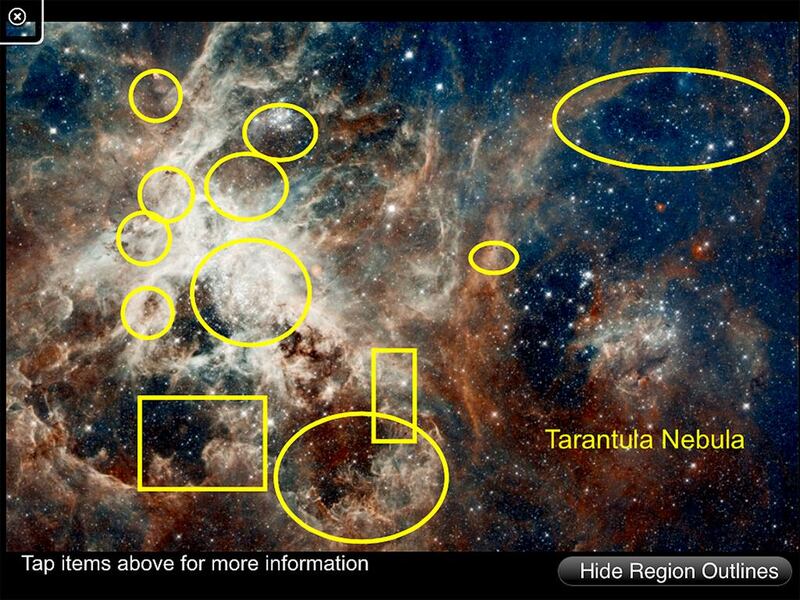An e-book for children with visual impairments is soon to be available at Apple’s iBook store as a free download on your iPad.
Titled Reach for the Stars: Touch, Look, Listen, Learn, the e-book is inspired by a new Hubble Space Telescope image of the colourful 30 Doradus Nebula – a giant star-forming region.
“We want to convince children that science is cool, is fun and that anybody could be a scientist, if they want to,” says the astronomer Elena Sabbi of the Space Telescope Science Institute (STScI) in Baltimore, Maryland, and the inspiration behind this project.
Reach for the Stars shows the blind "that there are no barriers to scare you. And technology is improving so fast that we are sure you will be able to learn and to do things. Things are becoming more reachable," says Sabbi.
Sabbi and her team have created the book in partnership with SAS, a company based in North Carolina that develops analytics software to help people analyse and visualise data.
But it’s not just for the visually challenged – anyone can read the book.
“We created this mainstream book in a way that would benefit everybody, rather than something that is specifically dedicated to a relatively small audience of students with visual impairments,” says Ed Summers, a senior manager at SAS.
Reach for the Stars has six chapters and runs to about 90 pages. Every page of each chapter begins with a question, followed by a short answer.
Children with visual impairments won’t only hear the text read to them but also access the book using a refreshable Braille display, the VoiceOver screen reader, or the zoom feature that is included in every iPad. The book targets children between the ages of 10 and 12 and includes vivid images, graphics, videos and animations. For visually impaired kids, some of these images will be interactive, using pitch to indicate the stars’ brightness – the higher the pitch, the brighter the star. The temperature of a star will be conveyed through either the left or right ear. Cooler stars are on the left of the graph; hotter stars are on the right. Readers will hear about a cooler star through their left ear and hotter stars through their right ear.
“It’s a way to convey information that there is a trend in the distribution of stars in the diagram,” explains Sabbi. “If you are trying to explore the images with your finger, you can get lost. This is a much stronger way to share the information.”
Images, graphics, videos and animations appear in every chapter. Several prominent star clusters in an image of the 30 Doradus Nebula, for example, are marked by circles. Touch a circle and a short caption appears on the screen, describing the cluster. In addition to the VoiceOver and read-aloud options, the book would also offer closed captioning, a compatibility option for people with hearing aids, and a high-contrast feature for those with low vision. Chelsea Cook, a blind college intern who worked for Sabbi two summers ago, was the inspiration for the e-book project. Sabbi was trying to figure out how Cook could work with scientific data on the computer.
Max Mutchler, a scientist at STScI who has produced tactile images for people with visual impairments, suggested that Sabbi contact Ed Summers at SAS. “Ed told me that I could apply his techniques to 30 Doradus,” Sabbi says. “With Chelsea, we put together a website trying to explore the nebula. That project led to the outreach grant for the book.”
artslife@thenational.ae





